Do you have a question about the Vermont Castings UVS27M and is the answer not in the manual?
Warning about potential fire or explosion due to not following manual instructions, causing property damage or injury.
Steps to take if gas is smelled: do not light, do not use electronics, call gas supplier or fire department.
Emphasizes that installation and service must be done by a qualified installer, service agency, or gas supplier.
Details the dangers of carbon monoxide poisoning and its symptoms, emphasizing the need for fresh air and servicing.
Key safety points for installation and operation, including fuel type, codes, modifications, location, and clearances.
Provides detailed dimensions for the freestanding stove model.
Provides detailed specifications for the hearthmount stove model.
Specifies minimum empty space required between combustible materials and the heater for freestanding and hearthmount models.
Details requirements for installing the stove on rigid flooring or using a protective panel on combustible surfaces.
Warnings against installation in bathrooms/bedrooms and potential wall discoloration from heat currents.
Details BTU/h ratings, fuel compatibility (Natural Gas, Propane), and gas control types for various models.
Specifies the required inlet and manifold pressures for Natural Gas and LP (Propane) connections.
Provides guidance for high elevations and explains potential odors during initial operation or due to household impurities.
Warns about improper installation, adjustment, or service causing injury or property damage, advising consultation with qualified personnel.
Describes the UVS27 as an unvented gas appliance certified to ANSI standards, available in models with different controls.
Explains the necessity of fresh air for safe and proper operation of fuel-burning appliances, especially in energy-efficient homes.
Classifies spaces as Unusually Tight Construction, Confined Space, or Unconfined Space for ventilation planning.
Details the criteria for unusually tight construction, requiring supplemental fresh air if met.
Explains how to calculate space volume and compare it to appliance BTU/Hr ratings to determine if the space is confined or unconfined.
Details two methods for ventilating confined spaces: using grilles to adjoining spaces or venting directly to outdoors.
Warnings against operating in confined spaces without adequate ventilation and references to National Fuel Gas Code.
Instructions for unpacking the stove, emphasizing care due to fragile porcelain enamel surfaces.
Step-by-step guide for attaching the fan, shroud, snapstat, and rheostat control switch.
Details attaching the switch assembly to the stove shroud and connecting wires to the valve.
Provides guidance on thermostat wire gauge selection and connecting thermostat wires to the valve.
Instructions for removing the screen, log brackets, and preparing for glass and catalyst installation.
Details procedures for removing, orienting, and reinstalling the burner, including air shutter placement.
Guides on setting the catalyst on the firebox, installing shoulder bolts, and securing the glass frame assembly.
Instructions to check the rating plate for fuel type and ensure proper connections for Natural Gas or Propane.
Emphasizes that gas connection must be done by a qualified technician and outlines pressure testing procedures.
Step-by-step instructions for inspecting and installing the rear, right, and left logs correctly.
Guides on installing the screen frame, front plate, and engaging steel tabs and bottom lips.
Details how the front plate engages with side plates and notes the importance of the control door swing.
Describes how to engage the Hearthmount front with the base of the side plates for proper fit.
Instructions for placing the screen and top grille, completing the assembly of the shells.
Guidance for the initial fire, including expected odors and ventilation recommendations.
Instructions on checking pilot flame and burner patterns for correct operation each time the heater is lit.
Explains how to adjust flame height using the HI/LO adjustment knob on Honeywell and Eurosit valves.
Emphasizes visual checks of pilot and burner flames, comparing them to illustrations for abnormal patterns.
Crucial safety warnings and procedures to follow before lighting the heater, including gas leak checks.
Specific steps to take if gas is detected, emphasizing immediate action and contacting authorities.
Detailed step-by-step instructions for lighting the pilot and main burner, including control knob operations.
Instructions for safely turning off the gas supply to the heater, including control knob and switch operations.
Advises turning off the heater and allowing it to cool completely before attempting any servicing or troubleshooting.
Troubleshooting steps for when the ignitor operates but no spark is present at the pilot.
Troubleshooting steps for when the ignitor sparks but the pilot flame fails to ignite.
Addresses issues where the pilot flame extinguishes after the control knob is released, suggesting causes and solutions.
Explains causes for a lifting pilot flame, such as incorrect gas pressure or thermocouple issues.
Troubleshooting steps for when the pilot ignites but the main burner fails to light.
Addresses scenarios where the main burner shuts off with the pilot flame, often related to insufficient fresh air or pressure.
Details the importance of keeping the firebox, burner, and controls free of dust and debris for optimal operation.
Step-by-step instructions for cleaning the firebox, including removing the front plate, screen, and inspecting logs.
Guidelines for replacing glass panels and caring for cast iron surfaces with dust cloths and touch-up paint.
Warns to turn the pilot OFF before painting and never paint the pilot area.
Explains the importance of annual cleaning for optimal combustor performance and outlines the procedure.
Steps for safely removing the combustor module when the heater is cold.
Procedure for cleaning the combustor filter using a vacuum cleaner and a mild soapy water solution.
Instructions for reinstalling the combustor module on the firebox and securing it with screws.
Detailed listing of various components for UVS27R and UVS27M models, including part numbers and descriptions.
Lists part numbers for shell enamel components for Hearthmount models based on color.
Lists part numbers for shell enamel components for Freestanding models based on color.
Details the FK28 fan kit for distributing heated air, including specifications, maintenance, and installation references.
Describes the UVGODCFK kit which replaces the standard screen with a glass panel and includes a catalytic combustor.
Information on available remote controls for the UVS27R, including models and their functions.
Details the warming shelf accessory for keeping foods warm and mentions installation stages.
Covers Vermont Castings/Majestic appliances and details the one-year basic warranty against manufacturing defects.
Outlines lifetime coverage for heat exchangers/chambers and specific periods for components like cast iron and glass.
Details terms, exclusions, non-transferability, and the procedure for obtaining warranty service.
| Brand | Vermont Castings |
|---|---|
| Model | UVS27M |
| Category | Gas Heater |
| Language | English |
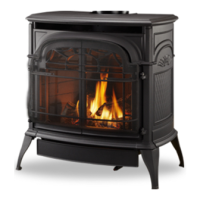
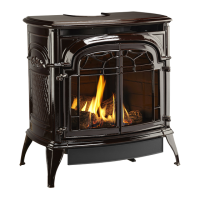
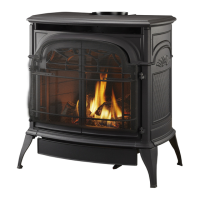

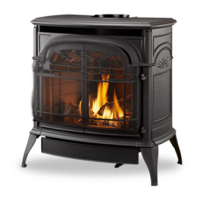
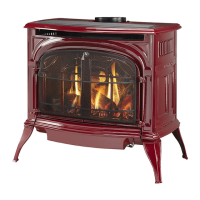

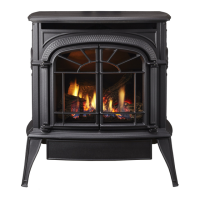

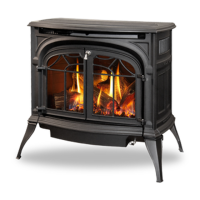


